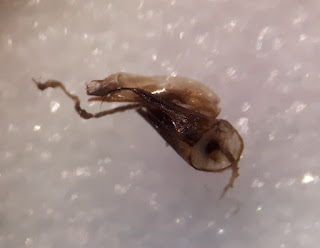Carabus nemoralis - Goat Meadow at Gatwick
...then the rove beetles (Staphylinidae) are the fearsome Mongolian warriors of the steppes, with overlapping scales of iron and flexible leather, allowing for furiously fast attacks on the enemy (I've been reading a lot of Conn Iggulden historical fiction of late).
Devil's Coach Horse (Ocypus olens) - Photo by W J Heeney
Last Saturday was the Staphylinidae Identification Workshop with the British Entomological and Natural History Society, lead by Roger Booth and Peter Hodge. It was another excellent day of networking with beginner and expert entomologists alike, learning about the fearsome (and sometimes beautiful) variety of rove beetles.
Roger Booth lead the workshop on Saturday at Dinton Pastures
A clumsy abdominal dissection
However, I'm not really sure how Dr A. would feel about this; my first attempt since uni at beetle genitalia dissection in order to determine the exact species... Needs a little more practice.
Tergites IX and X, plus one really mashed up aedeagus (male organ)
From Staphylinidae of Britain and Ireland
These are a few I've found about the place so far at Gatwick, usually lurking underneath reptile refugia and bits of bark...
Devil's Coach Horse (Ocypus olens) - a monsterous 30mm
This little bullet-shapped jobby is Tachinus rufipes - around 6mm in length
Drusilla canaliculata (some species names make even adult entomologists snigger), about 5mm
Mongol warriors, about 5ft 7"
Platydracus sp. Another large staph at around 20mm.
Photo by W J Heeney






















